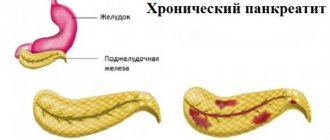Urinary tract infections are a common disease in everyday urological practice. Significant progress in the treatment of urinary tract infections has been observed over the past twenty years. The article touches upon such important issues as the etiology, pathogenesis and treatment of urinary tract infections in adults.
Urinary tract infections (UTIs) are a serious problem due to their prevalence and associated morbidity. According to statistics, they account for approximately 20% of all community-acquired and approximately 50% of nosocomial infections. Advances in recent decades have contributed to a better understanding of the pathogenesis of urinary tract infections and have elucidated the important role of both bacterial and patient-related factors in the development or prevention of infection.
The dynamic development of antibacterial therapy has greatly facilitated the correct treatment of UTIs, but the inappropriate and widespread abuse of antibacterial drugs has led to an increase in drug resistance of microorganisms.
Epidemiology of UTIs
The content of the article
Urinary tract infections are one of the most common infectious diseases in humans.
The incidence of UTI depends on the sex and age of the subjects, as well as on the specific characteristics of the study population.
- In the neonatal period, UTI is detected in approximately 60% of cases in boys, which is associated with a higher incidence of congenital urinary tract defects.
- From the age of three months, this trend is reversed, and the incidence of urinary tract infections in girls and women is ten times higher than in their male counterparts.
- Every second woman suffers from cystitis at least once in her life, and 10% of sexually active women develop UTIs once a year.
- Urinary tract infections are rare in men under 50 years of age, but in patients over 60 years of age the number of reported cases is growing rapidly. This is associated with the appearance of bladder obstruction, most often in the form of benign prostatic hyperplasia.
- The incidence of UTIs is much higher among people hospitalized for any reason or living in nursing homes or nursing homes.
Benign Prostatic Hyperplasia
The risk of UTI increases when there is an obstruction to the flow of urine or when circumstances favor bacterial colonization and growth. Physiological factors that predispose to UTIs include pregnancy, old age, and medical conditions such as diabetes and urolithiasis.
Etiology and pathogenesis of UTI
The most common causes of UTIs are bacteria, and less commonly viruses, fungi, or parasites. The prevalence of certain types of bacteria isolated from patient urine depends largely on the population being studied. The situation is completely different for patients receiving outpatient treatment than for patients in hospitals.
Under physiological conditions, the urinary tract is sterile except at the end of the urethra. The first episode of UTI in an outpatient setting is caused by Escherichia coli in 80% of cases, Staphylococcus saprophyticus in 10-15% (except for the group of young sexually active women, in which it accounts for about 30%), other gram-negative bacteria (Proteus mirabilis, Klebsiella spp.) or gram-positive (staphylococci, streptococci, enterococci). 70% of recurrent community-acquired infections are caused by Escherichia coli. Also, the most common nosocomial infections are caused by Escherichia coli (about 50%), Enterobacter spp., Pseudomonas spp., Serratia marcescens, as well as staphylococci, enterococci and fungi.
Escherichia coli
In 95% of patients, a UTI is the result of infection with a single strain of bacteria. Infection with several strains is observed in 5% of patients, mainly in catheterized patients with weakened immunity, neurogenic bladder disorders or defects of the urinary system.
Infection of the urinary system can occur through the ascending route (urogenic infections), the bloodstream (hematogenous infections - very rarely caused mainly by Staphylococcus aureus), the lymphatic route, or continuously (in the presence of a urogenital or urogenital fistula).
A UTI is almost always caused by bacteria entering the urethra. Under physiological conditions, bacteria often enter the urinary tract, but due to the body's defense mechanisms, the development of UTIs is rare.
The most important natural defense mechanisms against UTIs are:
- length of the urethra in men;
- ureteral peristalsis, normal function of vesicoureteral valves;
- acidification and concentration of urine;
- correct bacterial flora of the vagina and area around the urethra;
- antibacterial properties of prostate secretion;
- mechanisms for preventing bacterial adhesion in the urinary tract: mechanical impact of a stream of urine, mucopolysaccharides of the bladder wall, IgG and IgA antibodies.
Urinary tract infections rarely occur in healthy people with normal anatomical structure and physiological function of the urinary tract. In case of obstructed urine outflow or weakening of the body due to systemic diseases (diabetes, gout, tumor process), we often encounter inflammatory changes in the urinary system.
Gout
The most common factors contributing to the development of a urinary tract infection include:
- 1st pregnancy,
- old age,
- obstruction to the outflow of urine - urolithiasis, prostate adenoma,
- atrogenic factors - urinary tract instrumentation (cystoscopy, bladder catheterization, ascending pyelography),
- congenital malformations of the urinary tract - double cup-pelvic system, retrograde vesicoureteral outflow,
- diabetes, gout,
- neurogenic bladder,
- end-stage renal failure (dialysis),
- sexual relations,
- prolonged immobilization in bed.
Urine in the urinary tract of a healthy person is sterile. The presence of bacteria in it indicates infection.
The main symptom for diagnosing a UTI is the so-called significant bacteriuria, when the number of bacteria in 1 ml of fresh, aseptically collected urine exceeds 100,000.
The occurrence of significant bacteriuria by gender and age is presented below:
| Age | women | Men |
| School age | 1% | 0,03% |
| 15-25 years | 3% | 0,5% |
| 30-35 years | 5-10% | up to 1% |
| 50-70 years | > 10% | up to 4% |
| over 80 years old | > 20% | > 10% |
In people with dysuria, the presence of up to 100 bacteria may indicate a urinary tract infection. Treatment for UTIs should begin as soon as clinical symptoms appear.
Tasks of a urologist:
- fight against bacteriuria,
- refusal of instrumentation of the urinary tract - bladder catheterization,
- proper treatment of systemic diseases.
Reasons for the development of inflammatory processes in the female genital organs
Normally, the vaginal microflora is very diverse, which provides natural protection against infection. It contains lacto- and bifidobacteria, which are also called Dederlein's bacilli. They account for 90-95% of all normal vaginal microflora in women of reproductive age.
These microorganisms break down glycogen, which is present on the surface of the epithelial cells of the vaginal mucosa, resulting in the formation of lactic acid. It ensures the maintenance of an optimal acidic environment for the vagina with a pH in the range of 3.8-4.5, in which many microorganisms die, and therefore cannot cause infection and the development of the inflammatory process. Therefore, any manipulations, including the use of antibacterial or antimicrobial agents, that change the level of acidity in the vagina, can create the preconditions for the development of inflammatory diseases.
Normally, the pH in the vagina is higher in girls before puberty and in postmenopausal women, since the number of lactobacilli directly depends on the level of estrogen.
The remaining 5-10% are staphylococcus epidermidis, enterococci, hemolytic and non-hemolytic streptococcus. Normally, the vaginal microflora may also contain E. coli, yeast-like fungi, ureaplasma and mycoplasma, but due to the fact that the number of lacto- and bifidobacteria significantly exceeds their number, opportunistic microorganisms are not able to multiply and provoke the development of inflammatory diseases. Thus, the vaginal flora is a dynamic and completely self-regulating system, any interference in which can lead to the development of nonspecific inflammatory processes.
Expert Opinion of a Doctor
Undoubtedly, the most important cause of inflammatory diseases of the genitals are various microorganisms that penetrate the genital tract of women. Also, general diseases contribute to the occurrence of inflammatory diseases of the uterine appendages; great physical activity and mental stress; stressful situations; allergic reactions. Extreme concern is caused by the steady increase in sexually transmitted diseases, especially the so-called latent infections caused by chlamydia, ureoplasma, and mycoplasma.
Women's inflammatory diseases
Experience:
Ask a Question
In addition to the irrational use of antibacterial and antiseptic agents, violations of the rules of hygiene procedures, the following can provoke inflammation:
- transmission of other infectious diseases, including acute respiratory viral infections and others, leading to a decrease in immunity;
- hormonal disorders;
- incorrect selection of hormonal contraceptives, including intrauterine devices;
- taking a number of medications (cytostatics, antibiotics).
Even if microorganisms managed to provoke inflammation in the lower parts of the genital organs, the cervical canal, which normally has virtually no lumen, is designed to protect the upper parts from involvement in the pathological process. In addition to its natural narrowness, the cervix contains a large amount of mucus, saturated with nonspecific protective factors. Thanks to it, the vast majority of pathogens cannot penetrate the uterus further and provoke inflammation.
However, infections and inflammatory diseases of the uterus, ovaries and fallopian tubes are also common. Their occurrence is facilitated by:
- intrauterine manipulation, including diagnostic curettage, abortion, removal of tumors, etc.;
- sexual intercourse during menstruation, when the cervical canal expands for natural reasons and loses some mucus;
- childbirth;
- surgical interventions on the pelvic and abdominal organs;
- chronic infections;
- stress;
- hypothermia.
All this can lead to changes in the natural mechanisms of protection of the internal genital organs and create favorable conditions for their infection by opportunistic or pathogenic microorganisms with the subsequent development of an inflammatory disease.
General principles of treatment of urinary infections
- Antibacterial treatment.
- When choosing a drug and method of its use, the following are taken into account:
- drug sensitivity of the bacterial strain;
- patient tolerability of the drug;
- severity of infection;
- medical expenses.
- Symptomatic treatment depending on the type of disease:
- bed rest;
- regular and complete emptying of the bladder;
- painkillers, antispasmodics;
- fluid intake (diuresis more than 1.5 liters per day);
- refusal of nephrotoxic drugs.
Fluid intake
The main goal of antimicrobial treatment is to eliminate pathogenic bacteria and prevent recurrent UTIs. Treatment procedures are differentiated depending on the severity of the infection and the sensitivity of the bacteria to the drugs used.
We now have a number of medications that are particularly useful in treating UTIs. These include antibiotics, fluoroquinolones, chemotherapeutic agents (eg, Bactrim, Urotrim, Bispetol) and herbal preparations.
The basic principle of antimicrobial treatment is to perform an antibiogram of bacteria growing from the inflamed area and carry out targeted treatment. In the case of acute infections with unpleasant signs, high fever and general symptoms, urologists prescribe broad-spectrum antibiotics that act on gram-negative bacteria as first-line drugs. In these cases, the use of fluoroquinolones is increasingly recommended.
The patient must submit urine for bacteriological analysis and antibiogram before starting treatment, as well as 2, 14, 30 days after starting treatment. If urinary sepsis is suspected during the peak of fever, blood is taken for culture and antibiogram, and additional treatment with two broad-spectrum antibiotics is started.
Antibioticogram
Classification of urinary tract infections
Depending on the location of the infection, the age of the patient, the severity of symptoms and the presence of additional diseases, the following classification of UTIs has been proposed:
Depending on the severity of clinical symptoms:
- Symptomatic urinary tract infections.
A. simple - in people without aggravating factors:
- acute inflammation of the lower urinary tract;
- recurrent inflammation of the lower urinary tract;
- acute pyelonephritis.
Acute pyelonephritis
b. complex - in people with aggravating circumstances:
- acute inflammation of the lower urinary tract;
- recurrent inflammation of the lower urinary tract;
- acute pyelonephritis.
- Asymptomatic bacteriuria:
A. in patients without additional risk factors;
b. in patients with additional risk factors.
Depending on the location of the infection:
- Infections of the upper urinary tract: kidneys, vesico-pelvic system, perinephric area.
- Infection of the lower urinary tract: bladder, urethra.
Effective treatment of urethritis and cystitis
After confirming the diagnosis, the doctor prescribes medicine to combat the infection and symptoms:
- antibiotics,
- antispasmodics,
- painkillers.
Individuals suffering from a urinary tract infection should drink plenty of water to overcome dehydration. This also promotes the production of more urine and intensive flushing of infection from the urinary tract.
Patients should avoid drinking carbonated drinks, as well as tea and coffee. They irritate the bladder mucosa.
To relieve abdominal and back pain, use warm heating pads or warm compresses.
Asymptomatic bacteriuria
Most often it is discovered by chance during routine periodic examinations, since there are no subjective symptoms prompting the patient to seek medical help, and no noticeable changes in the urinary system are detected.
In the absence of concomitant disturbances in the outflow of urine, the course is usually mild and does not require treatment. In patients with urinary tract obstruction, symptoms usually do not resolve spontaneously. Antibacterial treatment is recommended for this group of patients.
Additionally, treatment should be started in the following cases:
- pregnancy (risk of pyelonephritis, premature birth, low birth weight of the newborn);
- before planned surgery (mainly on the urinary tract);
- diabetes.
In the first trimester of pregnancy, an antibiogram should always be performed before starting treatment for a UTI.
Acute pyelonephritis
Bacterial nonspecific inflammation of the renal system. The infection is mainly caused by Escherichia coli or other gram-negative bacilli: Klebsiella spp., Proteus vulgaris. It most often occurs in girls over 5 years of age and in women before menopause.
In the case of pyelonephritis, the following is observed:
- sudden onset;
- fever (up to 40 ° C);
- chills;
- pain in the lumbar region (positive Goldflam sign on this side);
- nausea, vomiting;
- increased ESR, peripheral blood leukocytosis;
- in urine: numerous bacteria, leukocytes, leukocyte cells, protein, red blood cells.
Nausea with pyelonephritis
In case of AP, in addition to urine analysis and culture, abdominal ultrasound and urography (after the disappearance of acute symptoms) should always be performed to visualize disturbances in the outflow of urine.
Patients with mild acute pyelonephritis can be treated on an outpatient basis. In severe cases, patients must be hospitalized. Initially, medications are used parenterally. Only 24 hours after the fever has disappeared, they can be administered orally.
Hospitalization of patients with acute pyelonephritis is carried out in the following cases:
- severe infection;
- no improvement after 2 days of targeted antibiotic therapy;
- difficult outflow of urine, mainly in older people and patients with diabetes;
- pregnancy.
If fever and low back pain persist after 3 days of treatment, repeat urine culture and repeat abdominal ultrasound to look for peri- or intrarenal abscess or previously unrecognized hip joint abnormalities.
The most common complications of acute pyelonephritis include chronic pyelonephritis, urinary tract sepsis, hydronephrosis, perirenal abscess, renal papillary necrosis, and scarring of the renal cortex.
Chronic pyelonephritis most often affects women. It is characterized by an insidious onset, a long, rarely symptomatic course with periodic exacerbations. Often leads to kidney failure.
A few words about the urinary system of a healthy person
Urine, which is one of the waste products of our body, is formed and accumulated in the organs of the urinary system. Urine is produced in the kidneys and passes down the ureters to the bladder. The bladder serves as a reservoir for storing urine, which is then emptied through the urethra. The urethra ends at the penis in men and the area above the vagina in women.
The kidneys are a pair of fist-sized organs located in the lumbar region that serve as a filter for the body, removing waste products from the blood in the form of urine. The kidneys also regulate the balance of various chemicals in the body (sodium, potassium, calcium, phosphorus, etc.) and control the acidity of the blood. The kidneys produce several hormones that help regulate blood pressure, stimulate the production of red blood cells, and promote the development of strong bones.
The ureters are two muscular tubes that transport urine to the bladder.
Normal urine is sterile and free of bacteria. However, bacteria can enter the urine from the urethra and then travel to the bladder.
Cystitis - inflammation of the bladder
Acute cystitis in people under 50 years of age applies only to women. This is an inflammation of the mucous membrane, sometimes of the deeper layers of the bladder wall.
Cystitis
Symptoms:
- sudden onset;
- symptoms of bladder irritation (pollakiuria, urge, painful urination);
- pain above the pubic joint;
- red blood cells, white blood cells and numerous bacteria are found in the urine.
Young women with dysuria usually develop one of three types of infection: inflammation of the bladder, urethra, or vagina. These diseases are differentiated based on clinical symptoms and laboratory urine test results.
| Diagnosis | Piuria | Hematuria | Bacteriuria |
| Cystitis | usually | Sometimes | From 100 to 100 thousand |
| Urethritis | usually | rarely | up to 100 |
| Vaginitis | rarely | rarely | up to 100 |
With vaginitis, there is discharge, itching in the vagina, pain during sexual intercourse, but there is no pollakiuria or painful urge to urinate.
Treatment of cystitis should be carried out from 3 to 7 days. In the uncomplicated form, the effectiveness of 3-day treatment is the same as that of 7-day treatment, but fewer side effects were found.
Urologists use longer treatment in women with the following conditions:
- pregnancy, diabetes;
- symptoms last more than 7 days;
- vaginal contraception;
- age over 65 years.
What are inflammatory diseases of the genital organs and their types
Inflammation is a process that is a natural reaction of the body to an irritant, mechanical damage or penetration of pathogenic microorganisms into tissues. It is aimed at destroying the irritating factor, eliminating the consequences of its negative impact on tissues and restoring their integrity. This is accompanied by redness of the tissues, swelling of varying degrees, pain, dysfunction and sometimes increased temperature.
Infectious processes today are of leading importance in the development of inflammatory processes of the external and internal genital organs.
In the latter case, when the inflammatory disease is a consequence of an infection, they are divided into:
- nonspecific - provoked by opportunistic microflora, which include streptococci, staphylococci, enterococci, Klebsiella, Escherichia coli, fungi of the genus Candida, etc.;
- specific - caused by infection with absolute pathogens, in particular gonococci, trichomonas, chlamydia, mycoplasma.
Thus, if the main route of infection with absolute pathogens is unprotected sexual intercourse, then nonspecific inflammatory diseases can also occur against the background of their absence due to decreased immunity, non-compliance with personal hygiene rules, disturbance of vaginal pH as a result of douching and other procedures, etc. Mixed infections are detected.
Expert Opinion of a Doctor
Inflammatory diseases of the uterine appendages are a complex and practically important problem associated with serious medical, social and economic losses. This pathology can lead to disruption, first of all, of the functions of both the reproductive and other organs and systems of the female body. In the structure of gynecological diseases, inflammatory processes of the female genital organs occupy a leading place, accounting for 65% of all pathologies of the reproductive system in women.
Women's inflammatory diseases
Experience:
Ask a Question
In this case, the female reproductive system is formed by the external genitalia and internal:
- vulva - the outer part of the genital organs, formed by the labia majora and minora and the vestibule of the vagina;
- vagina - a tubular organ lined with mucous membrane into which the cervix opens;
- cervix - one end opens into the vagina, and the other into the uterine cavity, the cervical canal passes inside it;
- the uterus is a hollow muscular organ that ensures pregnancy;
- ovaries - paired endocrine organs connected to the uterus through the fallopian tubes, where already at the time of the birth of a girl the entire supply of follicles with eggs is present;
- Fallopian (uterine) tubes are hollow tubular formations that ensure the passage of a mature egg at the time of ovulation from the ovary into the uterine cavity.
In the area of the labia, directly next to the vagina, there are paired glands called Bartholin's glands. They provide the production of secretions to moisturize the vaginal opening.
Each of these organs, when favorable conditions are created, can become a victim of inflammation. On the basis of which all gynecological inflammatory diseases are divided into those affecting the lower and upper parts of the genital organs. The first include:
- vulvitis;
- bartholinitis;
- colpitis;
- endocervicitis;
- cervicitis.
Among the inflammatory pathologies of the upper genital organs there are:
- endomyometritis;
- salpingo-oophoritis;
- pelvioperitonitis;
- parametritis.
All of them can occur in an acute form, when symptoms arise suddenly, quickly intensify and are generally pronounced, or in a chronic form, when signs of the disease of varying severity are observed again and again with a certain frequency. Also, gynecological inflammatory diseases can occur in a subacute form, which is characterized by a blurred clinical picture of the pathology.
Urethritis
Most often, the disease is associated with sexual contact, catheterization or endoscopy of the bladder. Urethritis always occurs in patients with an indwelling urinary catheter. The opening of the urethra is red, patients complain of a number of symptoms:
- burning pain and itching in the urethra;
- leakage of mucous, glassy or purulent discharge;
- lower abdominal pain.
Until recently, the most common cause of urethritis was gonorrhea. The infections are now twice as likely to be caused by Chlamydia trachomatis and Ureoplasma urealyticum. In 30% of cases, gonorrhea infection coexists with two others.
Urethritis
Standard urine cultures are often sterile, followed by immunological tests and isolation of microorganisms on specially prepared media.
The most common treatments are a single dose of fluoroquinolones and doxycycline for 7 days.
Recurrent urinary tract infections
Recurrent UTIs are caused by the same pathogen as the first case, usually within 2 weeks after stopping treatment. Mostly relapse occurs in women, and most often it is inflammation of the bladder. After the first episode of urinary tract infection, approximately 20% of UTIs are rediagnosed within one year.
Causes of recurrent urinary tract infections include:
- incorrectly selected drug;
- route of administration, dosage, duration of treatment;
- obstruction to the flow of urine.
In treatment, urologists recommend constant use of antibacterial drugs and prophylaxis after sexual intercourse. For urinary tract infections less than twice a year, only episodes of infection are treated.
When infection occurs more than 3 times a year and is not associated with sexual intercourse, the drugs are administered daily or 3 times a week at night, while in the case of infection associated with sexual intercourse, the drugs are administered once immediately after sexual intercourse.
Treatment for 3–6 months reduces the incidence of urinary tract infections by up to 5–10%.
Inflammatory diseases of the external genitalia
Such diseases are not common and do not pose a serious threat to a woman’s health. These include vulvitis and bartholinitis. However, they also require timely diagnosis and treatment. Otherwise, the inflammatory process can become chronic, which will be much more difficult to cope with in the future.
Vulvitis
Vulvitis is an inflammation of a woman's external genitalia. It extremely rarely occurs in isolation and in the vast majority of cases develops against the background of existing inflammation of the vaginal mucosa, cervical canal, and uterine appendages.
Primary vulvitis is usually characteristic of women with diabetes mellitus, as well as those suffering from obesity, which leads to poor hygiene of the external genitalia and the formation of diaper rash and mechanical injury.
Typical symptoms of the disease are:
- itching and burning in the vulva area;
- swelling and redness of the external genitalia;
- purulent discharge;
- enlarged inguinal lymph nodes.
Sometimes this is accompanied by a slight change in general condition. In any case, to treat vulvitis, it is necessary to initially eliminate the primary inflammatory disease (vaginitis, endometritis, adnexitis). For isolated inflammation of the vulva, external use of antibacterial ointments and antiseptics is indicated. Antihistamines may be prescribed to reduce itching.
Bartholinitis
Bartholinitis is an inflammation of the Bartholin glands, which leads to blockage of their ducts. The process can be one- or two-way. This is accompanied by swelling, redness and severe pain of the gland, which takes on the appearance of a tumor. If left untreated in the early stages, an abscess forms, so when pressure is applied to the glands, pus may be released. This is accompanied by a deterioration in the general condition, in particular weakness, chills, and fever.
Treatment of bartholinitis is carried out by prescribing antibiotics and painkillers. Anti-inflammatory ointments should be applied directly to the inflamed gland. If an abscess has already formed, opening it is indicated, which quickly leads to an improvement in well-being and the disappearance of throbbing pain.
Sources
- Schaeffer A.: Urinary tract infections. Campbell Urology, 1992.
- Naber K.G. et al.: Recommendations for the treatment of urinary tract and male genital tract infections, 2000.
- Grinevich V. et al.: Urinary tract infections. Urological review, 2000.
- Safir MH et al.: Urinary tract infections: simple and complex, 1998.
- Eichman V.: Treatment of bacterial infections of the genitourinary system. Urological Review, 2000.
- Macfarlane MT: Urinary Tract Infections, 1997.
ONLINE REGISTRATION at the DIANA clinic
You can sign up by calling the toll-free phone number 8-800-707-15-60 or filling out the contact form. In this case, we will contact you ourselves.








